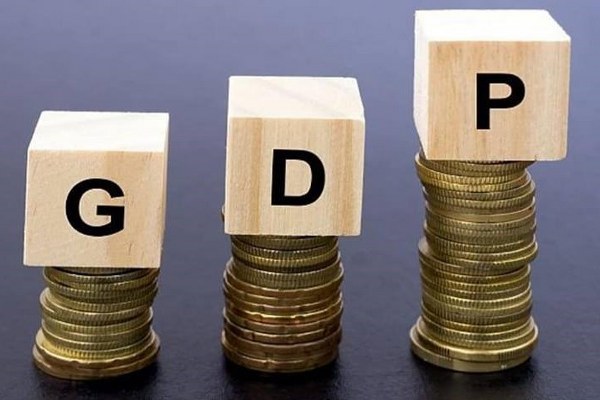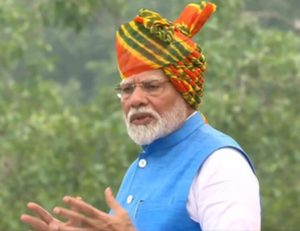GDP Q4 growth slumps, Govt says Q2 will see revival

New Delhi: India’s economy grew at a much-lower-than-expected 5.8% in the January-March period, slowest in past 17 quarters, which the government said is due to some temporary factors like NBFC sectors liquidity crunch.
India’s GDP growth has now slipped to 5.8% in Q4 after growing 6.6% in the third quarter, 7% in second and 8% in the first quarter. The below 6 per cent growth of Q4 is the slowest in five years.
The March quarter growth rate is slowest since 2014-15. The previous low was 6.4 per cent in 2013-14. For fiscal year 2018-19, the growth was 6.8%. The GDP growth fell from 7.2 per cent in the previous fiscal, due to poor performance in agriculture and subdued manufacturing growth.
The GDP numbers did not augur well for the new Finance Minister Nirmala Sitharaman who has a big task in hand to revive the growth momentum and bring economy back on track. Unfortunately, GDP growth is expected to maintain contraction even in Q1 period of current fiscal, making her exercise tougher.
As per official data, ‘Agriculture, Forestry and Fishing’ sector has shown a growth rate of 2.9 per cent as against previous year’s growth rate of 5 per cent. The ‘Mining and Quarrying’ sector has shown a growth rate of 1.3 per cent as against previous year’s growth rate of 5.1 per cent.
“There was some slowdown in quarterly growth due to temporary factors. Problems in the NBFC sector reflected in the consumption slowdown,” said Finance Secretary Subhash Chandra Garg in the briefing while adding the slowdown could continue in the first quarter of the current fiscal but the situation would improve in the second quarter (July-September).
“We see growth and consumption improving in the July-September (second quarter) period. Problems faced by NBFCs affected consumption in the finance sector, expect credit growth in the NBFC sector to pick up . Expect pick-up in capital and private investment”, he said.
At 5.8%, this is its slowest pace in 17 quarters, and falling behind China’s pace for the first time in nearly two years. But the finance secretary said it has not lost the tag to China. On an annualised basis, India’s 6.8 % GDP growth is still over that of China.
Ahead of the monetary policy review by RBI on June 6 , Garg said, “Inflation continues to be very low, expect MPC to take note of low inflation and growth slowdown”.
“Maybe the first quarter of the current fiscal could also reflect a bit of slowdown, but from second quarter onwards we expect the the growth and consumption to come up very well and 2019-20 should be turning out to be better than A2018-19,” Garg said.
“…Many of the things are getting sorted out now and interest rates have started declining substantially. The 10-year government paper was very close to 7% today. This is also feeding into NBFCs and other financing rates. New finances will be much cheaper. We expect credit growth in the NBFCs, consumer financing to pick up,” he said.
Construction has been a good story, he said, adding its growth is at 8.7% for 2018-19 is a very high growth rate, higher than the previous year’s of 5.6%.
Core industry data says steel and cement consumption continues to be very high, he added.
The government also revealed that joblessness in the country stood at 6.1 per cent of total labour force during 2017-18, the highest in 45 years.
The latest data from the Labour Ministry confirmed the unemployment rate projected in a pre-election leaked report.
As per the labour ministry, 7.8 per cent of all employable urban youth are jobless, while the percentage for the rural was 5.3 per cent. The joblessness among male on all India basis was 6.2 per cent, while it was 5.7 per cent in case of females.
Meanwhile, the fiscal deficit for 2018-19 came in at 3.39 per cent of GDP, marginally lower than 3.4 per cent estimated in the revised estimates of the Budget, mainly due to increase in non-tax revenue and lower expenditure.
In absolute terms, fiscal deficit at the end of March 31, 2019, stood at Rs 6.45 lakh crore as against Rs 6.34 lakh crore in the revised estimates of Budget. The fiscal deficit for 2018-19 works out to be 3.39 per cent of GDP, as per data released by Controller General of Accounts (CGA).
Although in absolute terms the fiscal deficit has gone up, as a percentage of GDP, the deficit figure has come down marginally, mainly on account of GDP expansion in 2018-19.
Published on: May 31, 2019 at 21:44 IST
IANS




